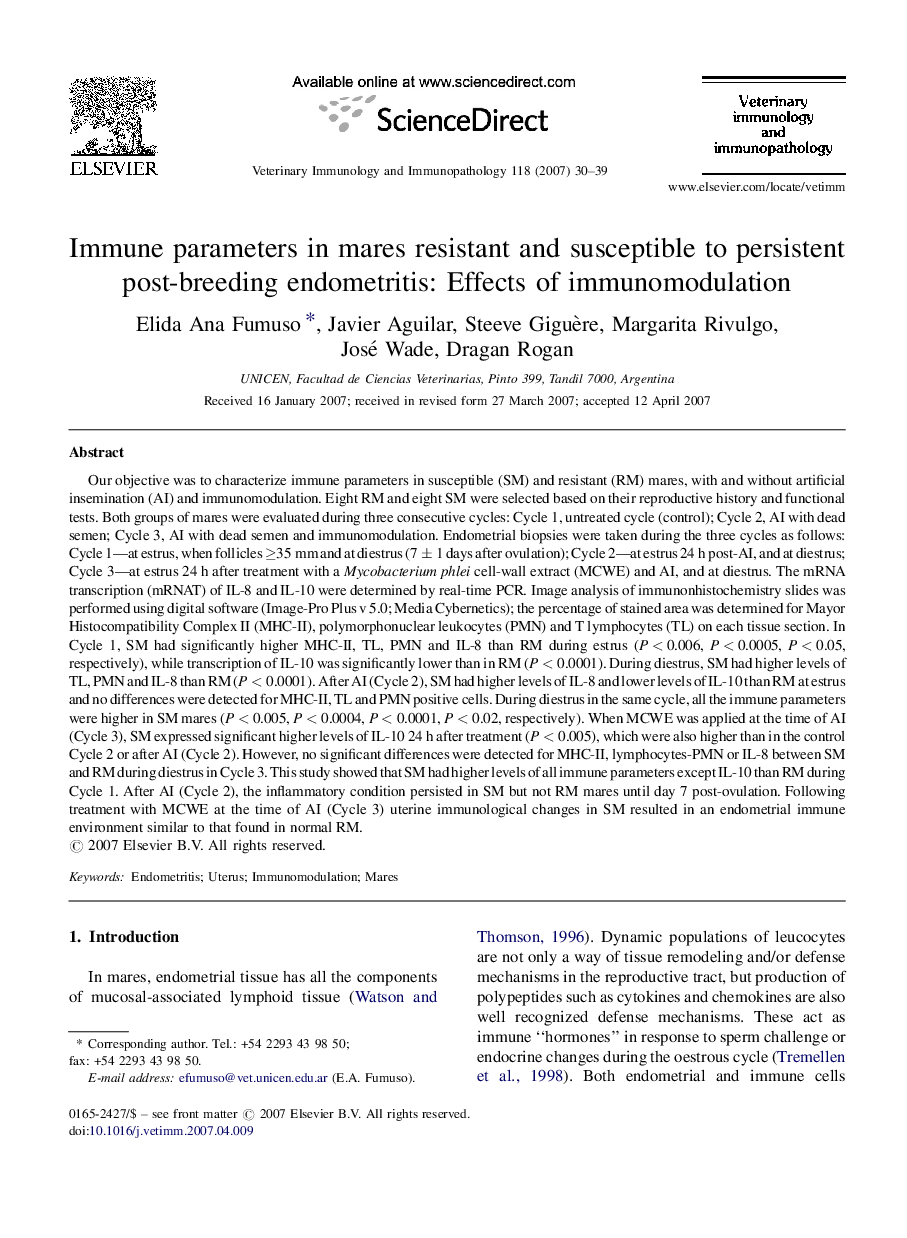| Article ID | Journal | Published Year | Pages | File Type |
|---|---|---|---|---|
| 2463284 | Veterinary Immunology and Immunopathology | 2007 | 10 Pages |
Our objective was to characterize immune parameters in susceptible (SM) and resistant (RM) mares, with and without artificial insemination (AI) and immunomodulation. Eight RM and eight SM were selected based on their reproductive history and functional tests. Both groups of mares were evaluated during three consecutive cycles: Cycle 1, untreated cycle (control); Cycle 2, AI with dead semen; Cycle 3, AI with dead semen and immunomodulation. Endometrial biopsies were taken during the three cycles as follows: Cycle 1—at estrus, when follicles ≥35 mm and at diestrus (7 ± 1 days after ovulation); Cycle 2—at estrus 24 h post-AI, and at diestrus; Cycle 3—at estrus 24 h after treatment with a Mycobacterium phlei cell-wall extract (MCWE) and AI, and at diestrus. The mRNA transcription (mRNAT) of IL-8 and IL-10 were determined by real-time PCR. Image analysis of immunonhistochemistry slides was performed using digital software (Image-Pro Plus v 5.0; Media Cybernetics); the percentage of stained area was determined for Mayor Histocompatibility Complex II (MHC-II), polymorphonuclear leukocytes (PMN) and T lymphocytes (TL) on each tissue section. In Cycle 1, SM had significantly higher MHC-II, TL, PMN and IL-8 than RM during estrus (P < 0.006, P < 0.0005, P < 0.05, respectively), while transcription of IL-10 was significantly lower than in RM (P < 0.0001). During diestrus, SM had higher levels of TL, PMN and IL-8 than RM (P < 0.0001). After AI (Cycle 2), SM had higher levels of IL-8 and lower levels of IL-10 than RM at estrus and no differences were detected for MHC-II, TL and PMN positive cells. During diestrus in the same cycle, all the immune parameters were higher in SM mares (P < 0.005, P < 0.0004, P < 0.0001, P < 0.02, respectively). When MCWE was applied at the time of AI (Cycle 3), SM expressed significant higher levels of IL-10 24 h after treatment (P < 0.005), which were also higher than in the control Cycle 2 or after AI (Cycle 2). However, no significant differences were detected for MHC-II, lymphocytes-PMN or IL-8 between SM and RM during diestrus in Cycle 3. This study showed that SM had higher levels of all immune parameters except IL-10 than RM during Cycle 1. After AI (Cycle 2), the inflammatory condition persisted in SM but not RM mares until day 7 post-ovulation. Following treatment with MCWE at the time of AI (Cycle 3) uterine immunological changes in SM resulted in an endometrial immune environment similar to that found in normal RM.
